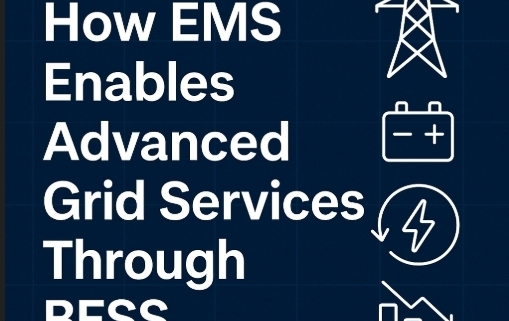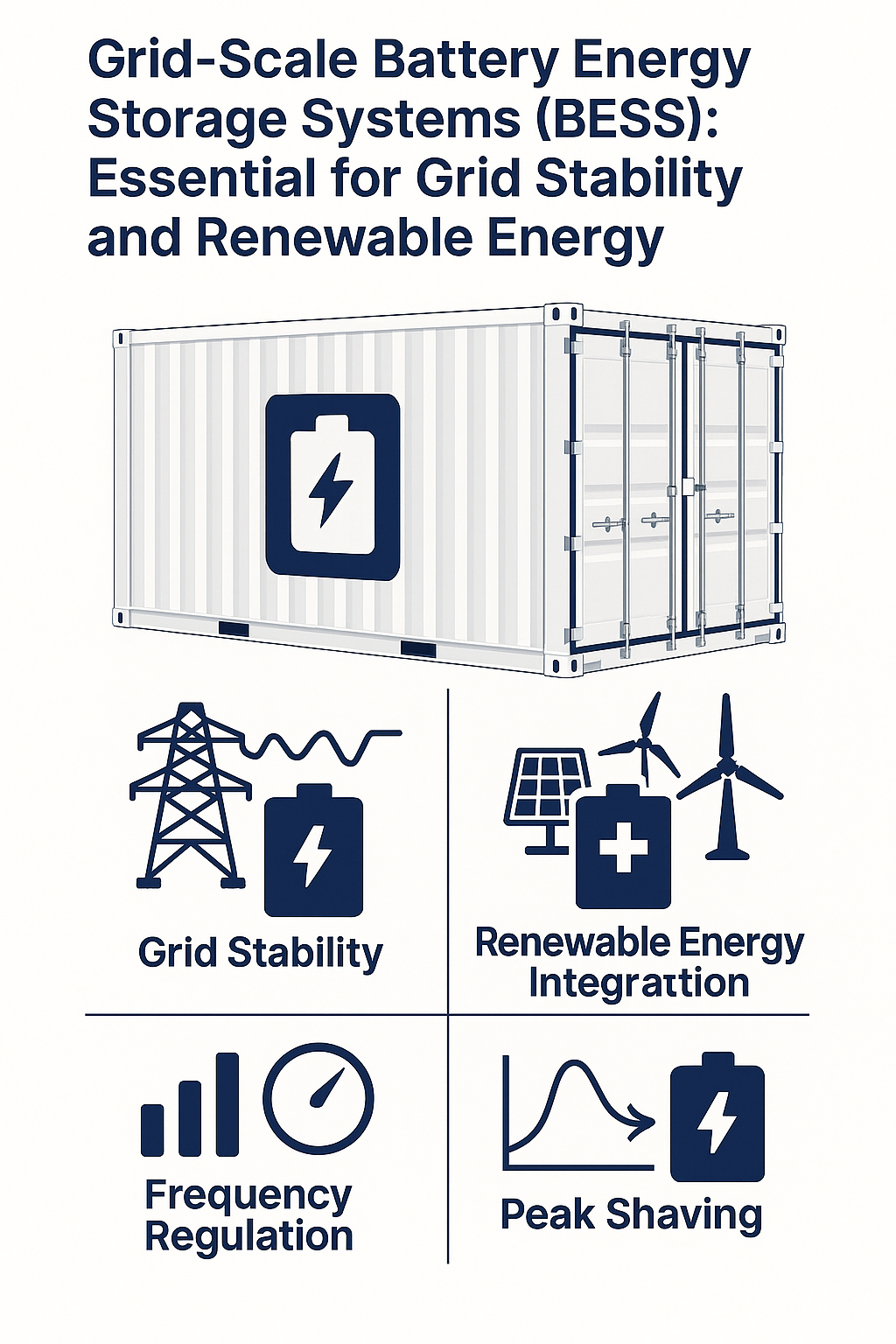How EMS Enables Advanced Grid Services Through BESS
Battery Energy Storage Systems (BESS) are evolving beyond just storing energy. With the intelligence of Energy Management Systems (EMS), they’re becoming powerful grid assets. From frequency regulation to voltage control, EMS unlocks a suite of advanced grid services that were once limited to traditional power plants.
Let’s explore how EMS empowers BESS to support modern energy grids.
What Are Advanced Grid Services?
Advanced grid services are functions that maintain grid reliability and quality. They include:
- Frequency regulation
- Voltage support
- Black start capability
- Spinning reserve
- Demand response
These services ensure the grid remains stable, especially with the rising penetration of renewable energy.
EMS as the Enabler of Grid Services
The EMS is the brain that enables BESS to respond quickly, accurately, and automatically to grid signals. Here’s how:
1. Frequency Regulation
Grids must maintain a constant frequency (like 50 Hz in India or 60 Hz in the US). Sudden load or generation changes cause frequency deviations.
- EMS monitors grid frequency in real time
- If the frequency drops, it triggers the BESS to discharge power
- If the frequency rises, BESS absorbs excess power
This dynamic response stabilizes the grid within milliseconds.
2. Voltage Support
EMS can:
- Inject reactive power through the BESS inverter
- Stabilize voltage at critical points in the distribution network
- Prevent brownouts or overvoltage conditions
This is especially valuable in weak grids or renewable-heavy zones.
3. Black Start Capability
If the grid experiences a complete blackout, EMS-controlled BESS can:
- Provide the initial jolt of energy to restart power plants
- Synchronize with the grid once it’s back online
- Act as a virtual power plant in microgrid scenarios
This minimizes downtime and enhances resilience.
4. Spinning Reserve
Instead of running gas turbines idle as spinning reserve, EMS can:
- Keep the BESS in standby mode with real-time readiness
- Dispatch power instantly when needed
- Save fuel costs and emissions for utilities
5. Demand Response Participation
EMS communicates with grid operators to:
- Reduce load during peak hours
- Shift energy consumption schedules
- Respond to market pricing signals
This not only earns revenue but also relieves grid congestion.
Real-World Example: EMS in Utility-Scale BESS
In regions like California, Australia, and Germany:
- Utility-scale BESS systems managed by EMS provide daily frequency regulation
- They participate in energy markets
- Their fast response time outperforms conventional power plants
Why This Matters for the Future
With the global shift toward decentralized, carbon-free energy, the grid needs flexible, intelligent support. EMS in BESS enables:
✅ Fast, automated grid response
✅ Lower operational costs
✅ Greater grid reliability
✅ Deeper integration of renewables
Final Thoughts
The integration of EMS with Battery Energy Storage Systems transforms them from passive storage units into smart, responsive grid assets. As the power grid continues to modernize, EMS will play a pivotal role in delivering the advanced services that ensure stability, flexibility, and sustainability.
FAQs
Q1. Can BESS replace traditional power plants for grid services?
Not entirely, but EMS-managed BESS can supplement or even outperform them in specific services like frequency regulation and black start.
Q2. Do EMS systems need to be certified for grid services?
Yes. Compliance with grid codes, communication protocols (like IEEE 2030.5), and interoperability standards is essential.
Q3. How fast can EMS react to frequency deviations?
EMS can trigger BESS responses in milliseconds, making them ideal for fast frequency response (FFR) services.
Q
Q



